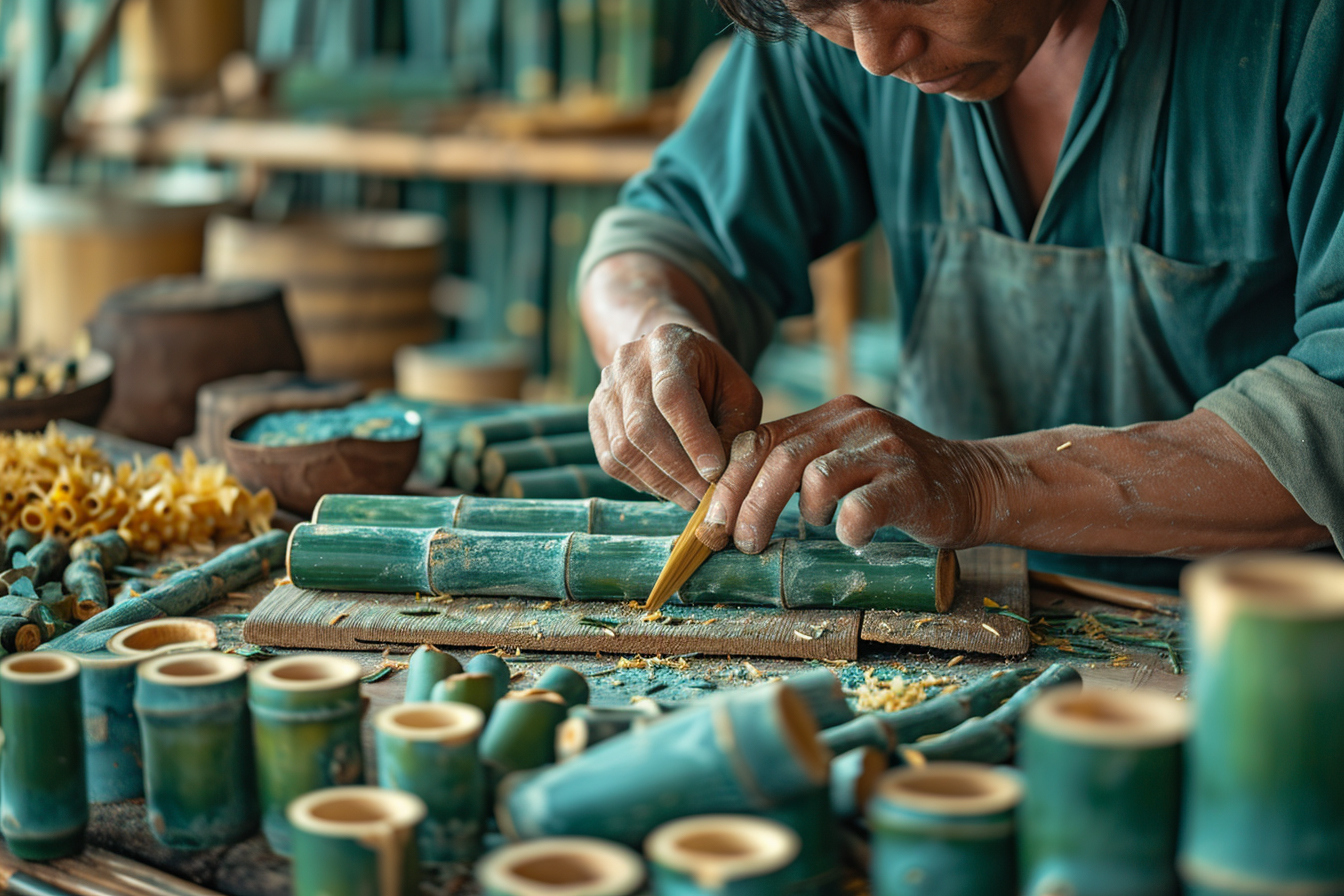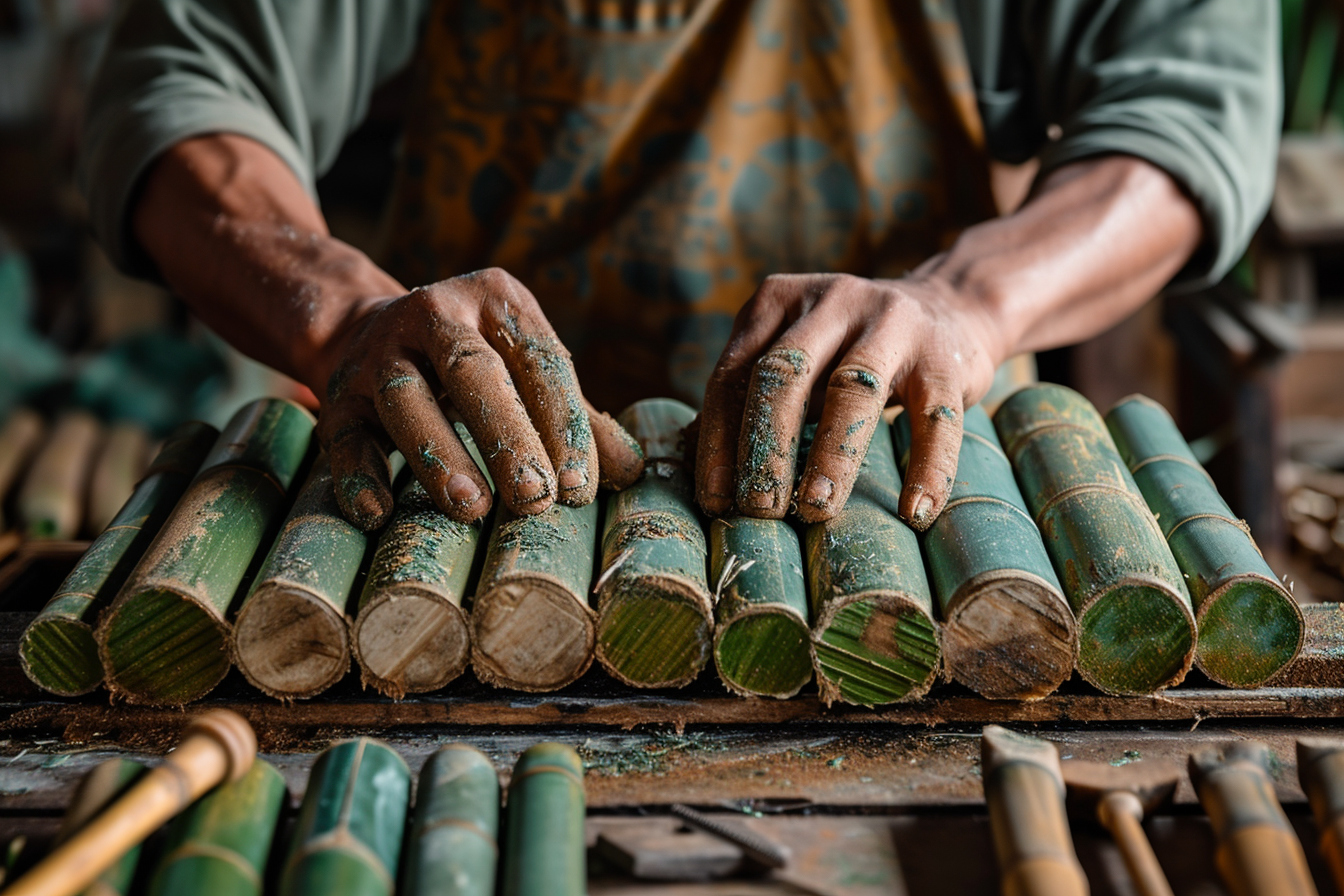Bamboo sculpture stands as an art form deeply rooted in cultural heritage, showcasing the profound dexterity required in transforming a simple plant into intricate artwork. Revered for both its ecological sustainability and its strength, bamboo provides a unique medium for artists to express their creativity. Branching out into bamboo sculpture can be a rewarding endeavor for anyone passionate about craftsmanship.
Understanding bamboo as a material
The properties of bamboo
Bamboo possesses characteristics that make it an ideal resource for sculptors. Its tensile strength rivals that of many metals, and it boasts a flexibility that permits various shapes and forms. Furthermore, bamboo’s rapid growth and abundance ensure it is a continuously available material that is also kind to the environment.
Selecting the right bamboo
Choosing the correct type of bamboo influences the sculpting process and the final result. Various species of bamboo differ in hardness, density, and color. Beginning with a species that is easier to work with can enhance the learning experience for novices in this craft.
Preparing your workspace
Essential tools and equipment
Before delving into the art of bamboo sculpture, it is paramount to prepare a work area with all the necessary tools. These tools may range from specialized bamboo carving knives to more common implements like saws, chisels, and sandpaper. Keeping your tools sharp is also vital for precision and safety during the sculpting process.
Safety considerations
Ensuring a safe workspace is indispensable. Sculptors should always wear protective gear, such as gloves and eye protection, to prevent injuries. Adequate ventilation is another important factor to bear in mind, as working with bamboo can generate fine dust particles.
Fundamental bamboo sculpting techniques
Understanding the grain
Grasping the concept of the grain is critical for sculpting bamboo. The grain direction influences how bamboo will split and where it can be most effectively carved. Ignoring the grain can lead to unwanted splitting or difficulty in achieving the desired shape.
Carving basics
Carving bamboo requires a combination of strength, precision, and patience. Start with simple cuts, learning how to remove material without compromising the bamboo’s integrity. As you progress, you can attempt more complex techniques like in-the-round carving, where the sculpture is dimensional from all views.
Shaping and forming
Shaping bamboo may involve techniques such as steaming or soaking, which make the material more pliable. Learning these methods allows for the creation of sweeping curves and elegant forms that are synonymous with the art of bamboo sculpture.
Designing your sculpture

Inspiration and drafting
Creativity in bamboo sculpture is limitless. Finding inspiration in nature, architecture, or even everyday objects can help you draft a preliminary design. Sketching your ideas beforehand not only aids in envisioning the final piece but also helps in planning the carving process.
Scale and proportion
Grasping scale and proportion is essential when conceptualizing a sculpture. Every dimension must contribute harmoniously to the total composition. A bamboo sculpture with well-considered proportions can achieve a balance that is both visually appealing and structurally sound.
Advanced techniques and considerations
Joinery and assembly
As skills mature, sculptors often tackle projects that require multiple pieces of bamboo. Mastering joinery techniques is critical in this phase. Joinery can range from simple lashings with cord to more sophisticated methods such as doweling or the creation of custom bamboo pegs.
Surface treatment and finishing
The final steps in bamboo sculpture involve surface treatment and finishing techniques. These can include sanding to achieve a smooth surface, applying oils or stains to enhance the bamboo’s natural color, and sealing the sculpture to protect it from environmental factors.
Aesthetic enhancements
Intricate details can be added to a bamboo sculpture through burning techniques such as pyrography, which can bring texture and depth to the piece. Experimenting with different finishes or incorporating other materials can also elevate the aesthetic quality of your work.
Overcoming challenges in bamboo sculpture
Challenges in bamboo sculpture are inevitable but surmountable with the right approach. Understanding the common issues such as cracking or splitting and developing strategies to address them is part of the learning curve. Finding solutions often involves research, experimentation, and engagement with the sculpting community to learn from others’ experiences.
The cultural significance of bamboo sculpture

Historical perspective
Bamboo has a storied history in the arts, particularly in Asia where it has been utilized for centuries in everything from functional items to elaborate works of art. Recognizing the historical importance of bamboo and its cultural significance can enrich the creation process and provide a deeper connection to the art form.
Contemporary bamboo art
The world of bamboo sculpture is not static; contemporary artists continue to push the boundaries of what can be achieved with this versatile material. Observing and analyzing the work of pioneering bamboo sculptors can inspire your own practice and open up new avenues for creative expression.
Learning resources and opportunities
Workshops and classes
For those serious about mastering bamboo sculpture, attending workshops or taking classes taught by skilled instructors can be immensely beneficial. These educational environments not only provide hands-on learning but also a space to connect with like-minded individuals.
Books and online tutorials
A wealth of knowledge exists in books dedicated to bamboo crafts, as well as online tutorials which are often free and easily accessible. These resources complement the hands-on experience and can provide guidance at every stage of your sculpting journey.
Apprenticeship and mentorship
Seeking an apprenticeship or finding a mentor in the field of bamboo sculpture can provide invaluable insights. The guidance from an experienced sculptor can accelerate your learning process and help you avoid common pitfalls.
Joining the sculpture community
Forums and online communities
Tapping into online forums and communities allows for the exchange of ideas, advice, and feedback on your work. These communities can be supportive environments that encourage growth and development in the craft.
Exhibitions and competitions
Participating in exhibitions and competitions can offer a different perspective on your work through public exposure. It can also lead to networking opportunities with fellow artists and connoisseurs.
Selling and marketing your work
As skills improve, you might consider selling your bamboo sculptures. Understanding the market, identifying your unique style, and effectively marketing your work are essential elements for commercial success.
Continuous improvement and innovation
Reflecting on your work
Reflecting on one’s progression is germane to continuous improvement in bamboo sculpture. Assessing what you have learned from each project and setting new challenges for yourself keeps the learning process dynamic.
Pushing creative boundaries
The landscape of bamboo sculpture is constantly evolving as artists explore new techniques and conceptual ideas. Being part of this creative expansion requires openness to experimentation and a willingness to push the boundaries of traditional bamboo craftsmanship.
As this narrative reaches its present limit, remember that the journey into bamboo sculpture is not merely about mastering a skill but also about embracing an art form that is synonymous with cultural identity, environmental consciousness, and creative expression. Your path to becoming adept in bamboo sculpture is as intricate and enriching as the art itself. Keep forging ahead, with persistence and a passion for learning. The mastery of bamboo sculpture is an ongoing process—a craft where the pursuit of knowledge never truly ends, but rather evolves with each curved line and shaped silhouette.